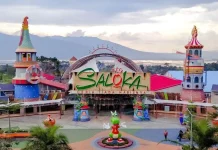Planned by Vidyadhar Bhattacharya, Jaipur holds the distinction of being the first planned city of India. Renowned globally for its coloured gems, the capital city of Rajasthan combines the allure of its ancient history with all the advantages of a metropolis. The bustling modern city is one of the three corners of the golden triangle that includes Delhi, Agra and Jaipur.
The story goes that in 1876, the Prince of Wales visited India on a tour. Since the colour pink was symbolic of hospitality, Maharaja Ram Singh of Jaipur painted the entire city pink. The pink that colours the city makes for a marvellous spectacle to behold. Jaipur rises up majestically against the backdrop of the forts Nahargarh, Jaigarh and Moti Doongri.
Jaipur traces back its origins to 1727 when it was established by Jai Singh II, the Raja of Amber. He shifted his capital from Amber to the new city because of the rapidly-growing population and an increasing water scarcity. Noted architect Vidyadhar Bhattacharya used the established principles of Vastu Shastra to build the city.
Places to visit in Jaipur
Amber Palace
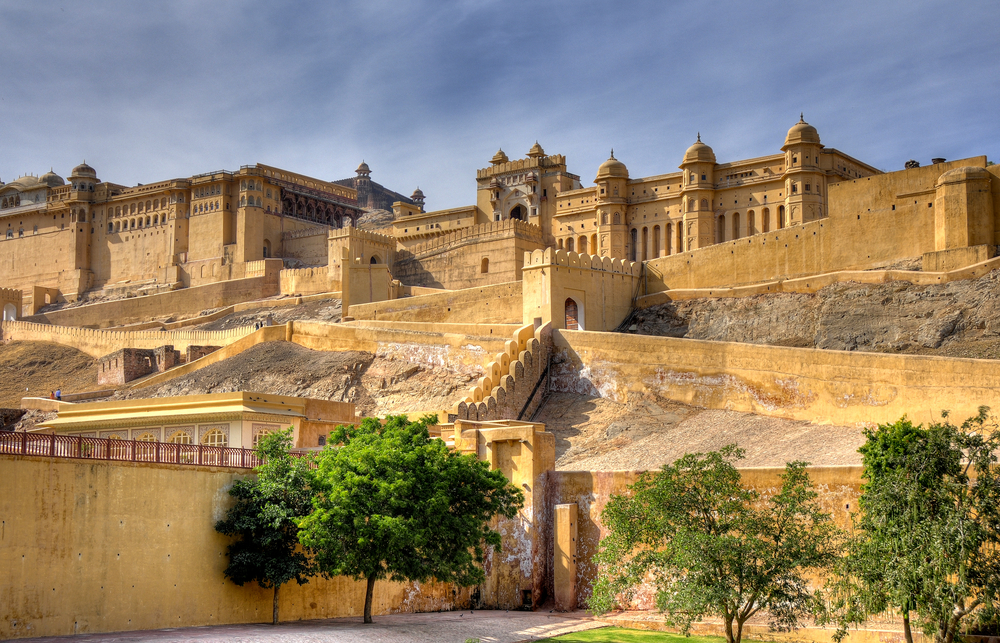
Amber, located about 11 kilometres from Jaipur, sits amidst picturesque and rugged hills. It incorporates both Rajput and Mughal architecture. Constructed by Raja Man Singh I in the late 16th century and completed by Mirja Raja Jai Singh, the fort is made of red sandstone and white marble.
Jaipur City Palace
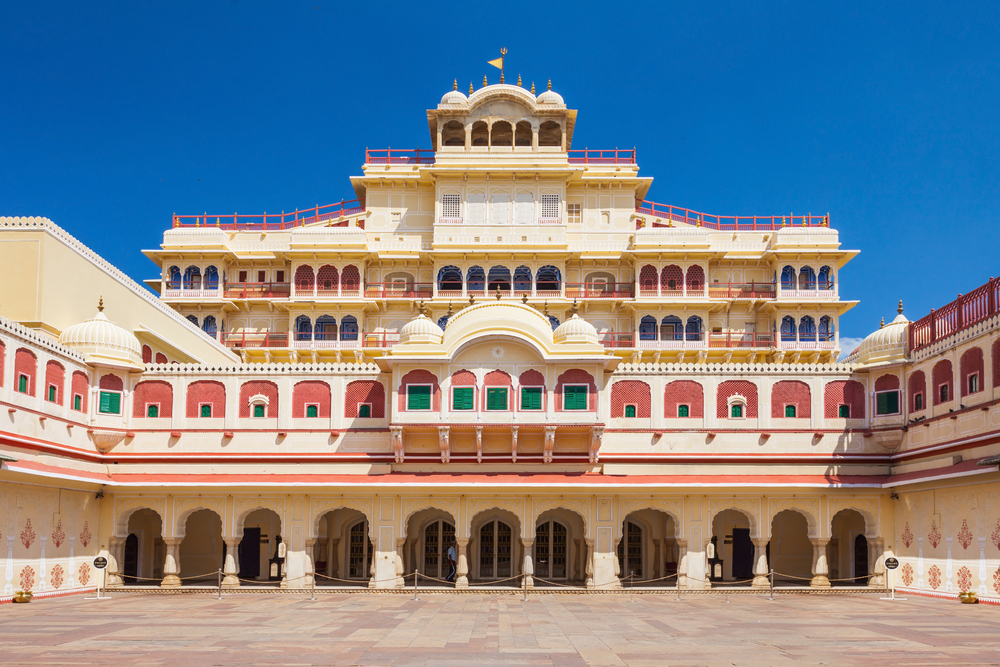
The City Palace is a splendid example of the foresight that Maharaja Sawai Jai Singh II had. As the founder of Jaipur, he took pains to create a magnificent walled city that encloses marvels such as the City Palace. The palace is a beautiful blend of Mughal and Rajput styles of architecture. The previous royal family continues to reside in one section of the palace. Located within the walls of the City Palace, Chandra Mahal is a seven-storeyed tower. However, the ground and first floors have now been given over for the Maharaja Sawai Man Singh II Museum.
Jantar Mantar
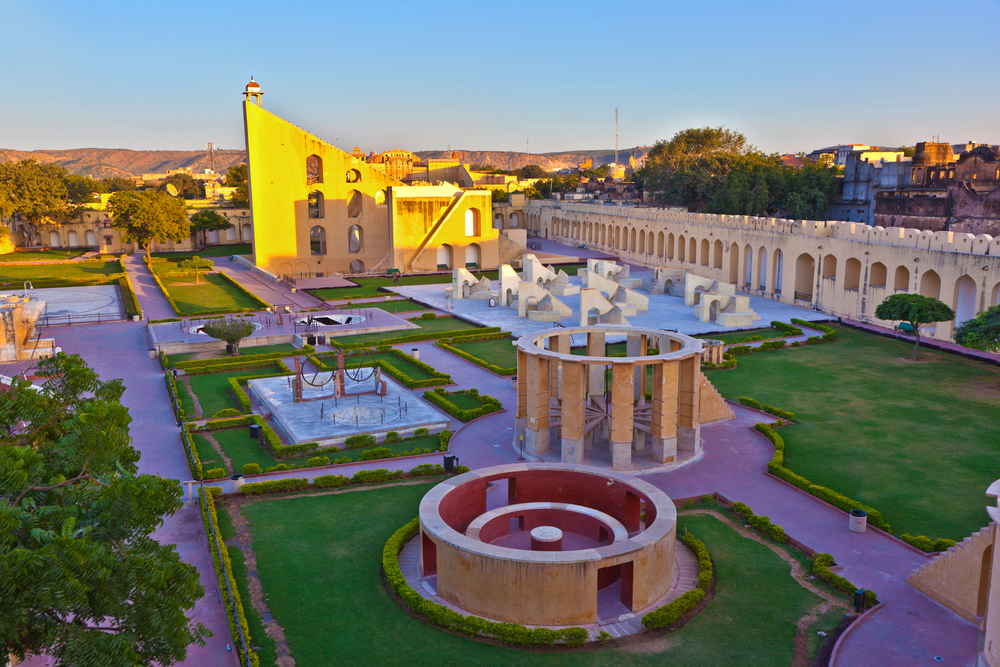
The Jantar Mantar in Jaipur is considered to be the largest of the five astronomical observatories built by Maharaja Sawai Jai Singh II, the founder of Jaipur. It contains fourteen geometric devices, designed to measure time, track celestial bodies and observe the orbits of the planets around the sun.
Hawa Mahal
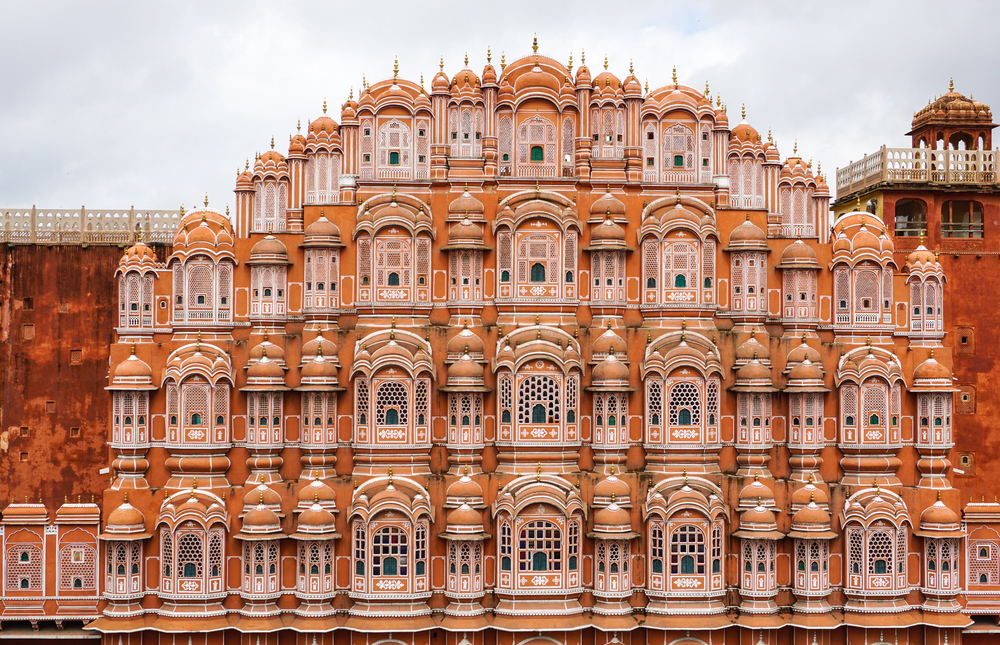
The Palace of Winds was constructed in 1799 by the poet-king Sawai Pratap Singh. The five-storied structure is made of pink sandstone and has 356 intricately carved jharokhas (windows). It was designed for the women of the royal family to sit in privacy while observing life on the street.
Albert Hall Museum
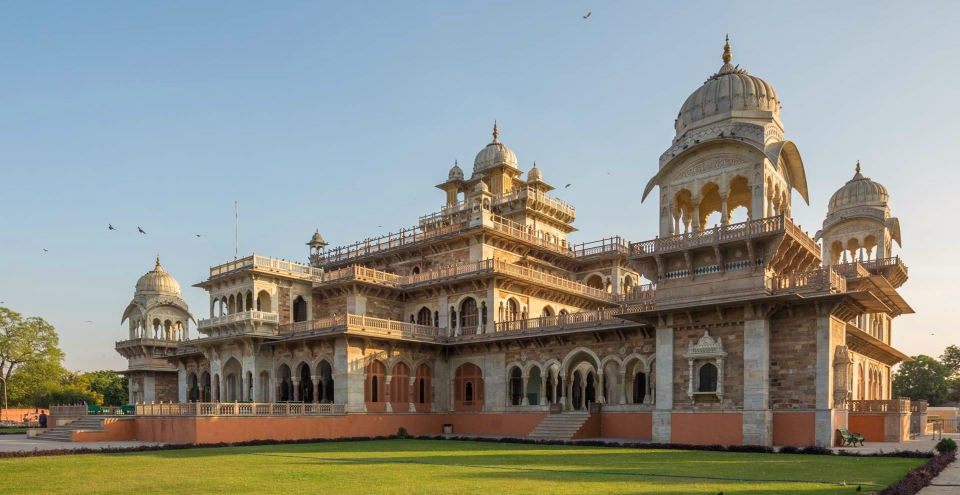
The building gets its name from The Victoria and Albert Museum in London, the inspiration for its design. The exquisitely built Albert Hall is housed in the centre of Ram Niwas Garden. Sir Swinton Jacob (who is also the mastermind behind many other palaces in Rajasthan) conceptualized and designed it using styles from the Indo-Sarcenic architecture and the Prince of Wales laid the foundation stone of the building in 1876. The museum displays a wide range of metal objects, wood crafts, carpets, stone and metal sculptures, arms and weapons, natural stones and ivory goods. It also houses a large collection of miniatures from Bundi, Kota, Kishangarh, Udaipur and Jaipur schools of art.
Nahargarh Fort
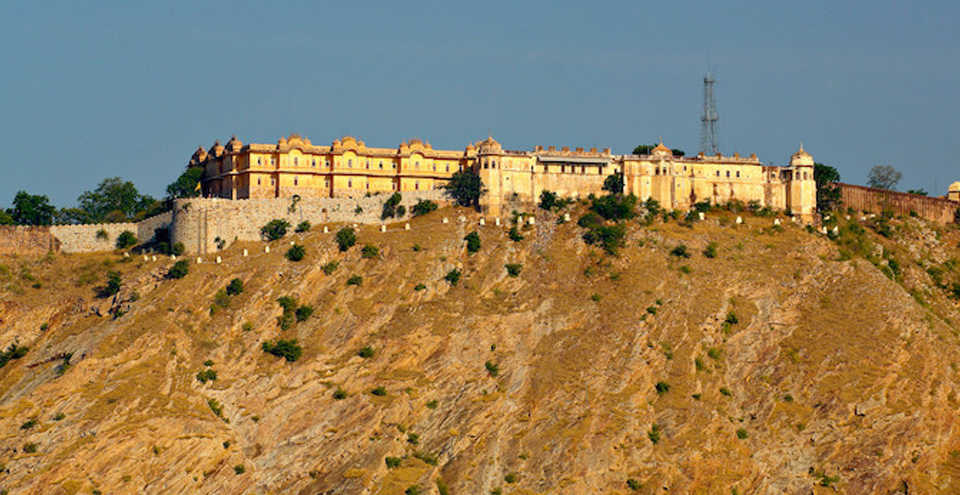
The northern frontier of Jaipur is fortified by Nahargarh Fort. Situated on a rough crest of the Aravalli range, the fort, which literally means ‘abode of the tigers’, was built in 1734 by Jai Singh to further defend Amber. Later, in 1868, the fort was extended to its present size.
Jaigarh Fort
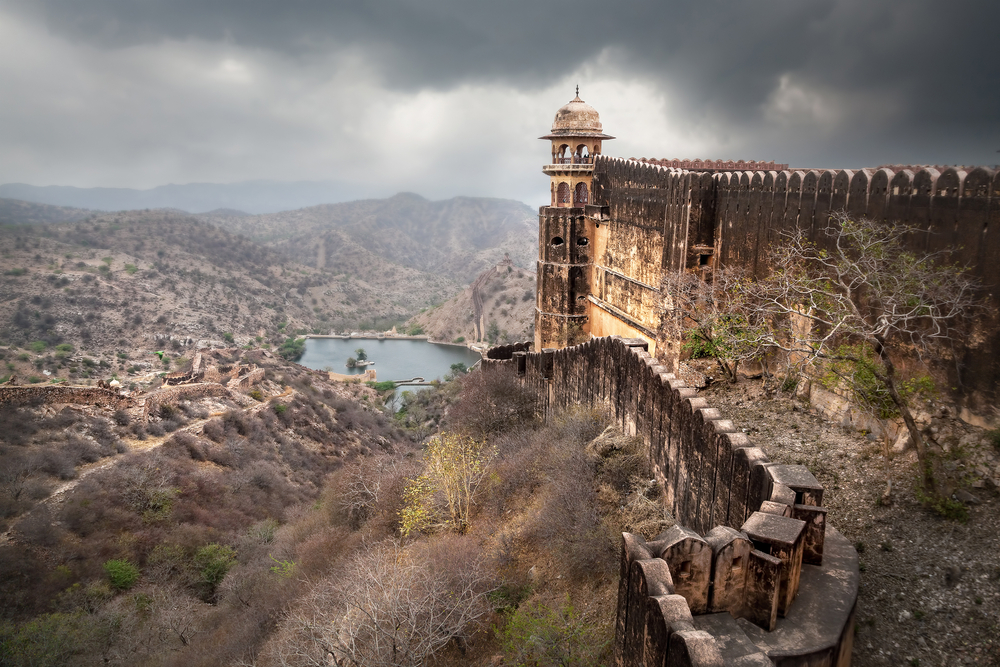
Of the three hilltop forts that overlook the city of Jaipur, Jaigarh is perhaps the most magnificent of them all. About 15 kilometres from Jaipur, it was built by Sawai Jai Singh II sometime in the early 18th century amidst the arid, rocky and thorn-scrub covered hills. Despite its ancient construction, it still retains most of its imposing citadel appearance. Visitors can see the world’s largest canon – Jaiban, at the fort.
Lakshmi Narayan Temple
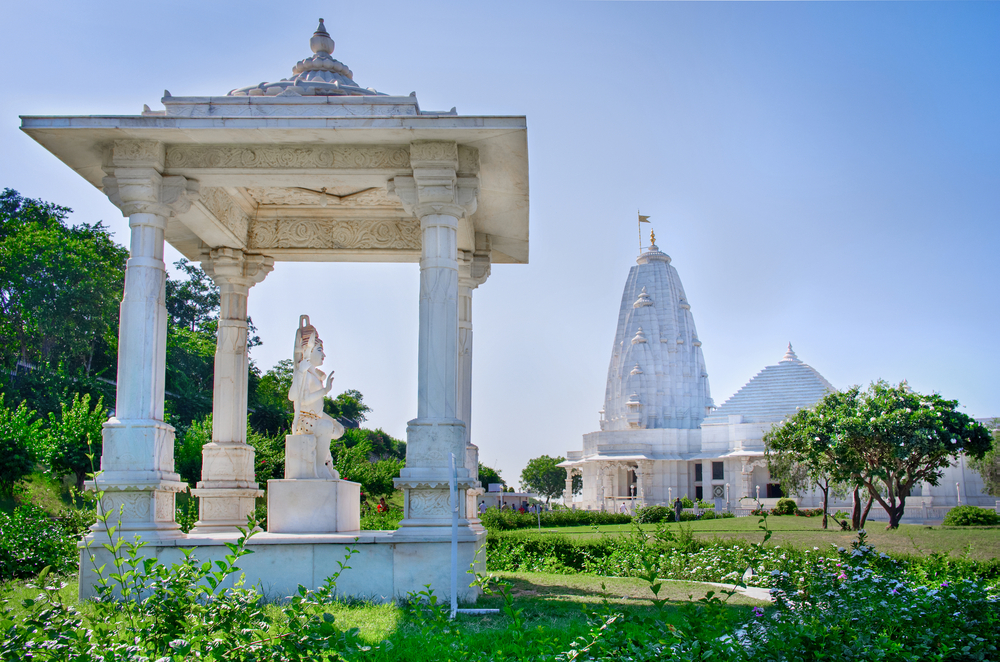
The Lakshmi-Narayan Temple, also known as the Birla Temple, is a comparatively newer temple built by the Birlas (a noted industrialist family). The temple, constructed entirely of white marble, is home to the deities of Vishnu and his consort Lakshmi.
Jal Mahal
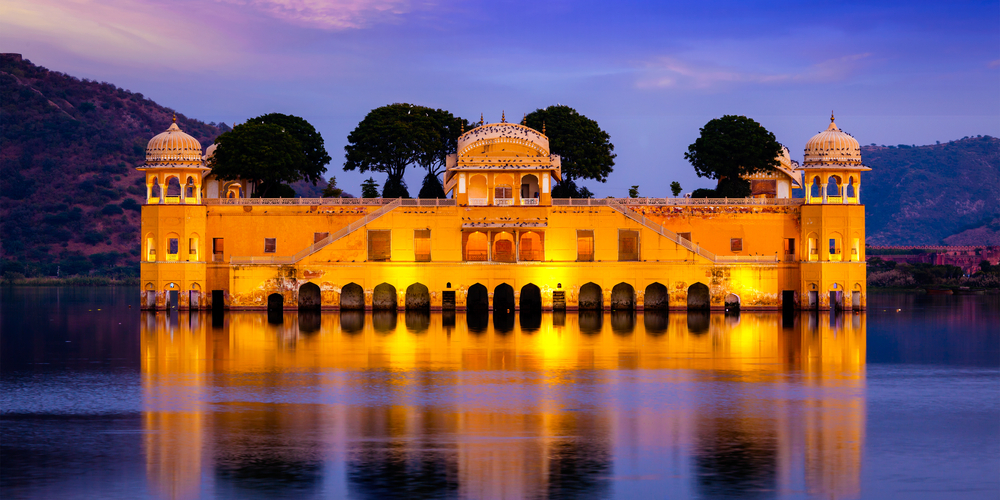
One of the most wonderful sights in Jaipur is the beautiful Jal Mahal or Lake Palace. The light, sand coloured stone walls and the deep blue of the water make for a wonderful contrast. The palace appears to float in the centre of Man Sagar Lake, where its magnificent exteriors can be enjoyed by tourists.
Gaitore
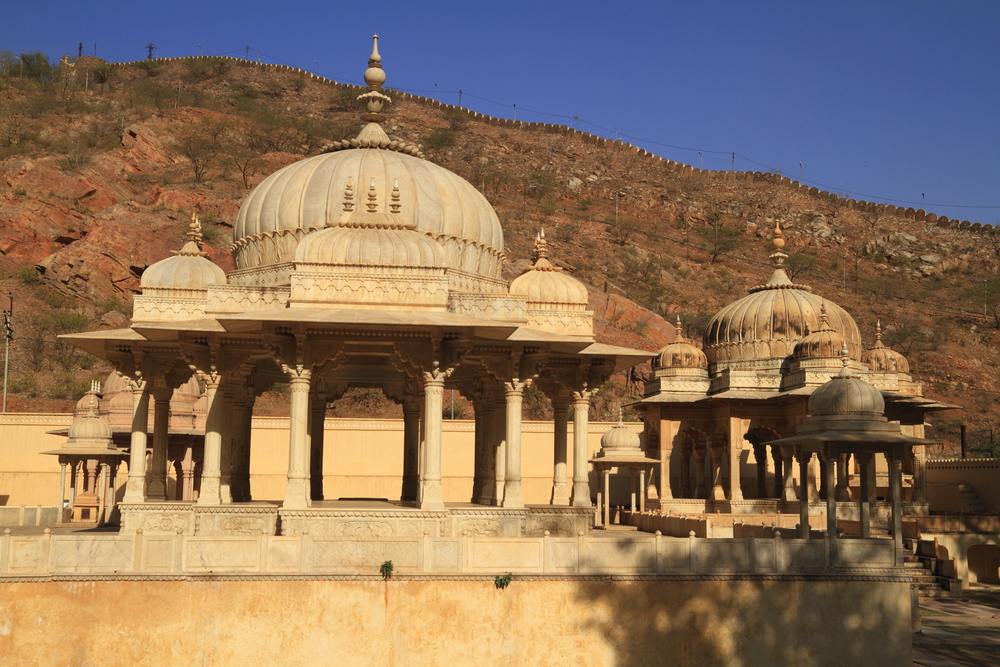
Just off the Jaipur-Amber road is Gaitore, where the former Maharajas of Jaipur are entombed. The chhatris (cenotaphs), made of white marble display the distinctive Rajput style of architecture. The open pavilions with ornate domes are supported by delicately sculpted pillars. The crematorium is located in the middle of yellow sandstone hills. The décor and extravagance of a particular chattri is meant to reflect the stature and prowess of the ruler it contains. The most graceful and beautiful chattri at Gaitor is that of Maharaja Jai Singh with 20 carved pillars. Tourists are especially drawn towards it because of its intricate carvings.
Sisodia Rani Palace and Garden
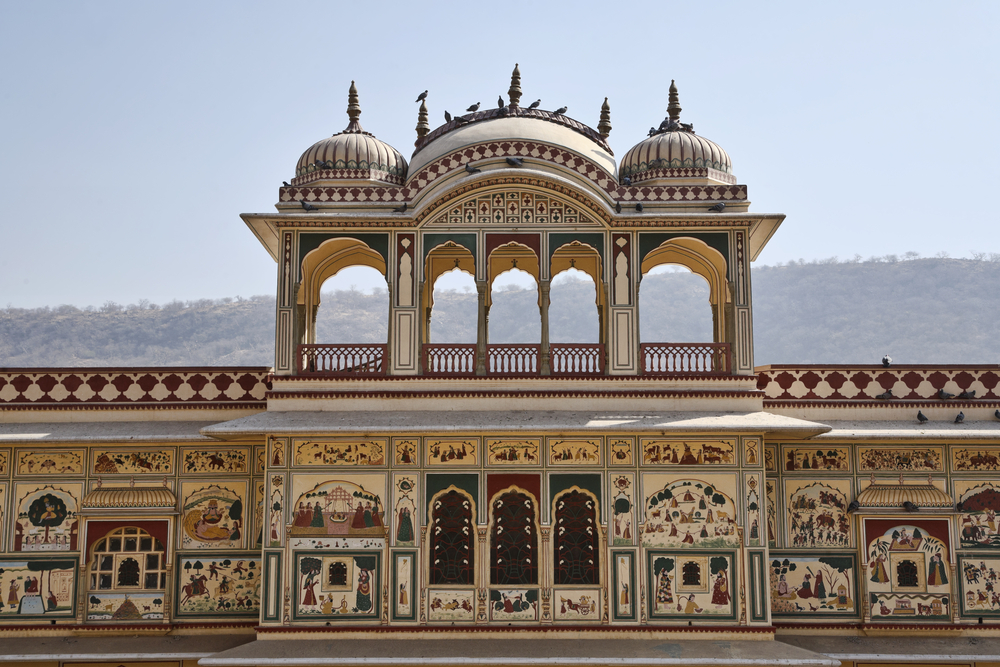
Sisodia Rani Palace and Garden is located 8 kilometres from Jaipur on the Agra road. Laid out in Mughal style, it is painted with the legends of Radha and Krishna. The garden is multi-tiered and has fountains, water courses and painted pavilions. Maharaja Sawai Jai Singh II built it for his Sisodia queen.
Central Park
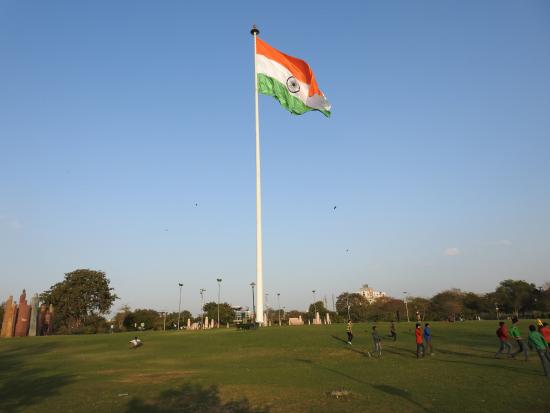
Central Park is a large green zone right in the centre of Jaipur that offers city dwellers a spot for a moment of respite. Conceptualised and built by the Jaipur Development Authority, it is Jaipur’s largest park. It houses a lush garden, the Polo Ground and a golf club. However, the highlight of the park is India’s first all-day-and-all-night monumental National Flag which also happens to be the country’s tallest flagpole.
Anokhi Museum of Hand Printing
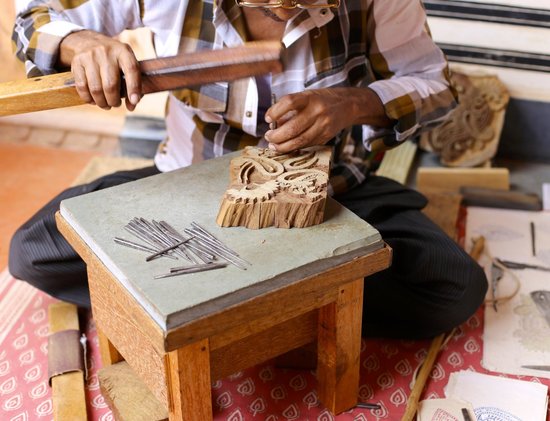
At a mere ten-minute walk through the cobbled streets of Amber lies the Anokhi Museum of Hand Printing. Located in a magnificently restored haveli (mansion), the museum displays a varied selection of block-printed textiles alongside images, tools and related objects – all chosen to provide an in-depth look into the complexity of this ancient tradition.
Govind Devji Temple
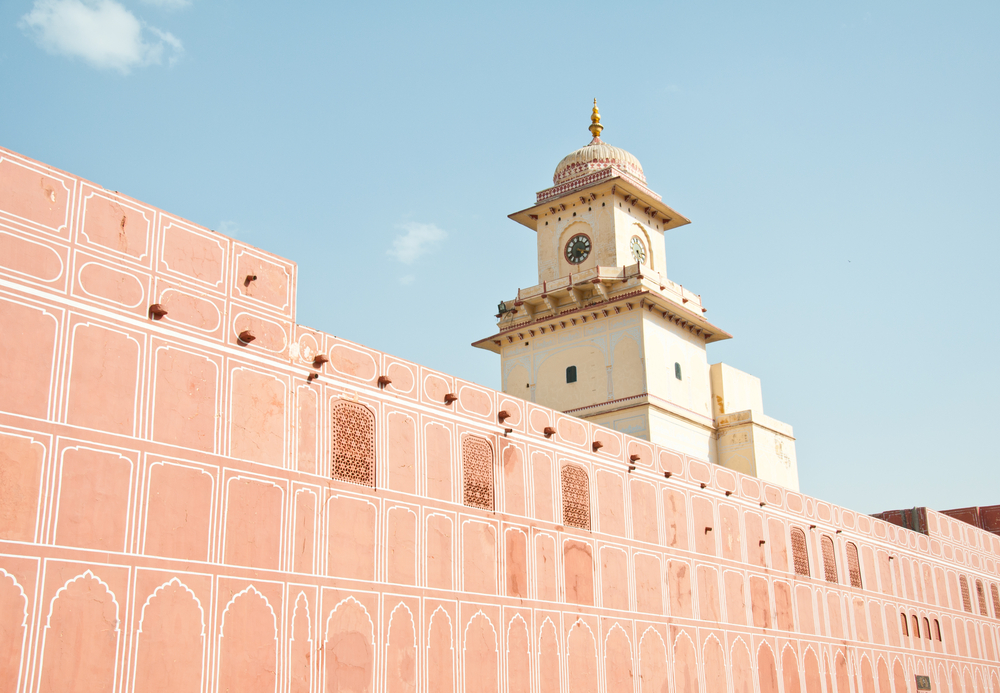
The Krishna temple is a rare spire-less temple and houses the idol of Govind Devji that Sawai Jai Singh brought from Vrindavan. The deity, worshipped by the erstwhile royal family, is also revered by the Hindus in Jaipur and nearby areas.
Moti Doongri
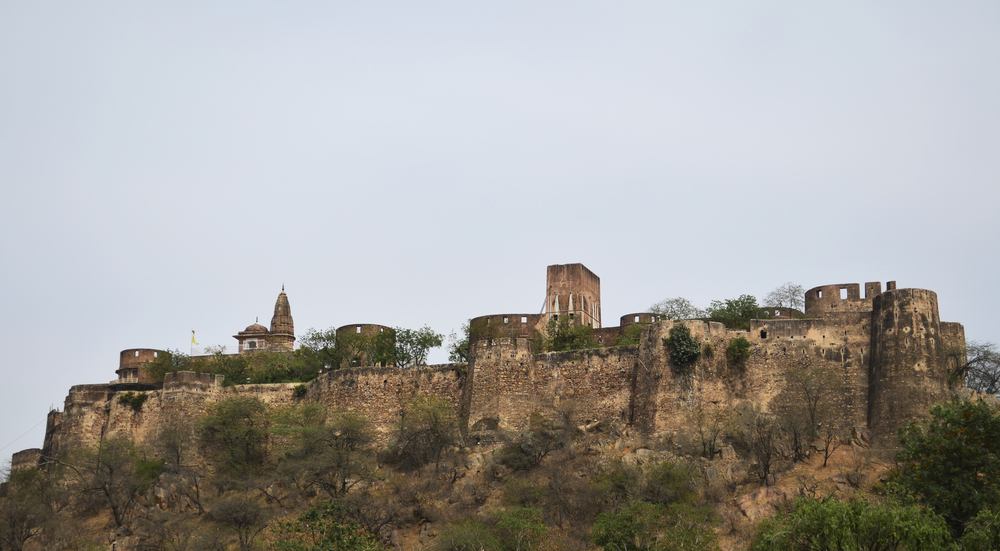
Rising from the middle of Jaipur is a small pearl-shaped hill called Moti Doongri. At the top of the hill sits an exotic palace – a replica of a Scottish castle – which is the private property of the royal family. The highlight of Moti Doongri is a famous and auspicious temple of Lord Ganesh located at the foothill.
Akshardham Temple
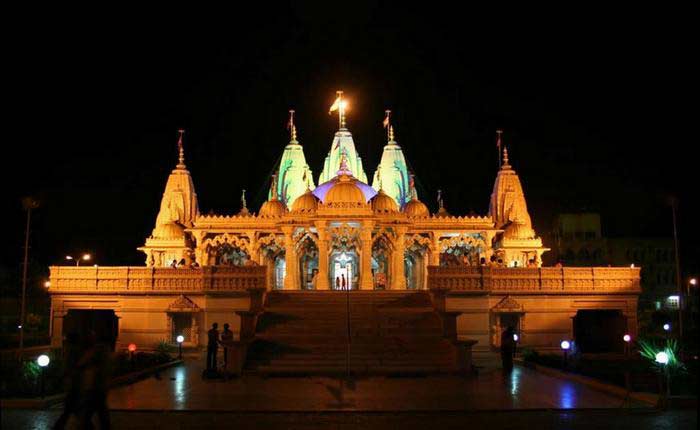
Akshardham Temple at Vaishali Nagar is among the most popular attractions for tourists visiting Jaipur. The temple, dedicated to the god Narayan, is well-known because of the beautiful architecture that includes magnificent idols, lifelike sculptures and intricate carvings.
Digamber Jain Mandir
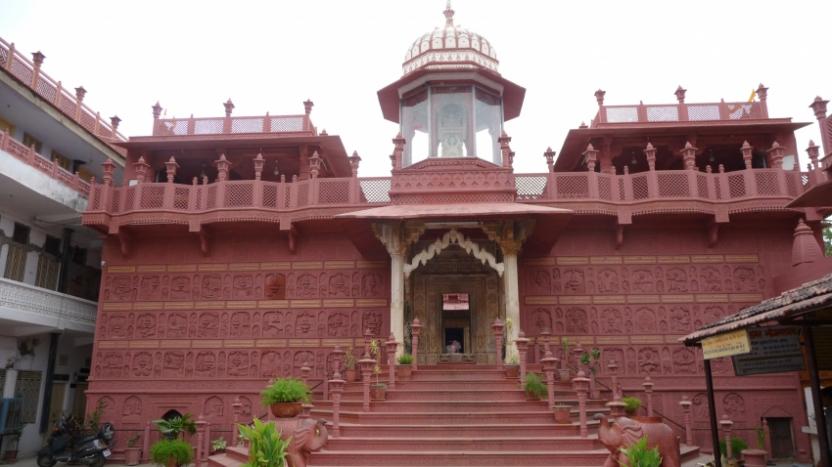
The ancient Digamber Jain temple at Jaipur is in Sanganer, 14 km from the city. The principal idol in the Sanghiji Temple is of Lord Adinath in the Padmasan (lotus position) posture. The temple is made of red stone and has attractive carvings. The seven-storied temple has sky-high ‘shikharas’ (spires) and its inner sanctum is a stone shrine with eight sky-high shikharas.
Galtaji
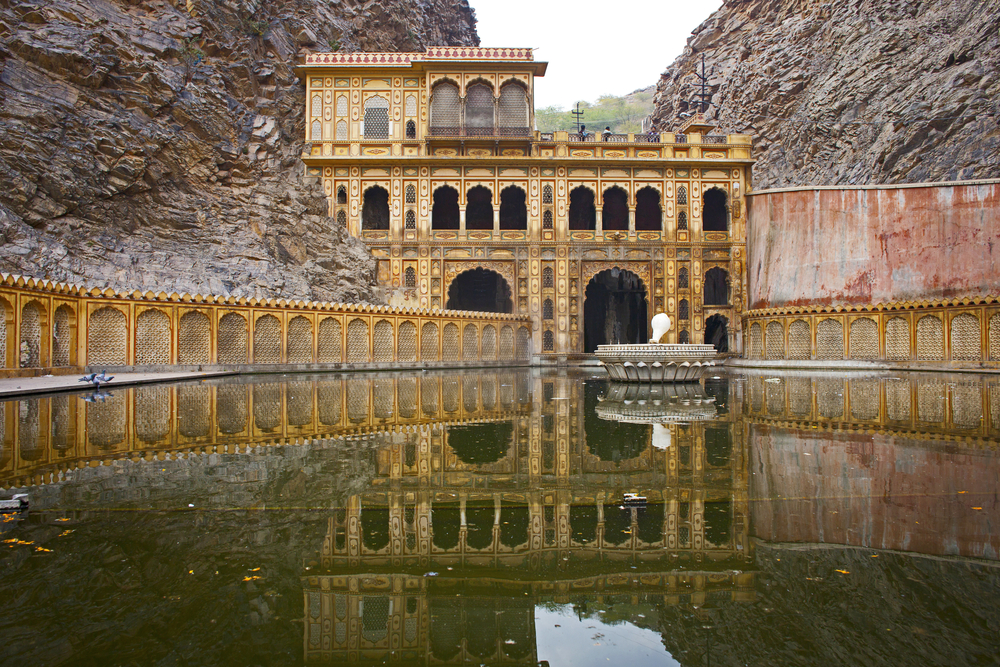
Galtaji is an ancient pilgrimage centre in Jaipur. Set amidst low hills and packed with locals and tourists alike, the attractive spot has temples, pavilions and holy kunds (natural springs and water tanks). Visitors to Galtaji will come across the complex of Ramgopalji temple, locally called the Monkey temple (Galwar Bagh). It gets this moniker because of a large group of resident monkeys. The green landscape and chattering monkeys add to the delight of the area. On top of the hill is a small temple dedicated to the sun god, called the Surya Mandir. Constructed by Diwan Kriparam, the temple can be seen from anywhere in the city.
Statue Circle
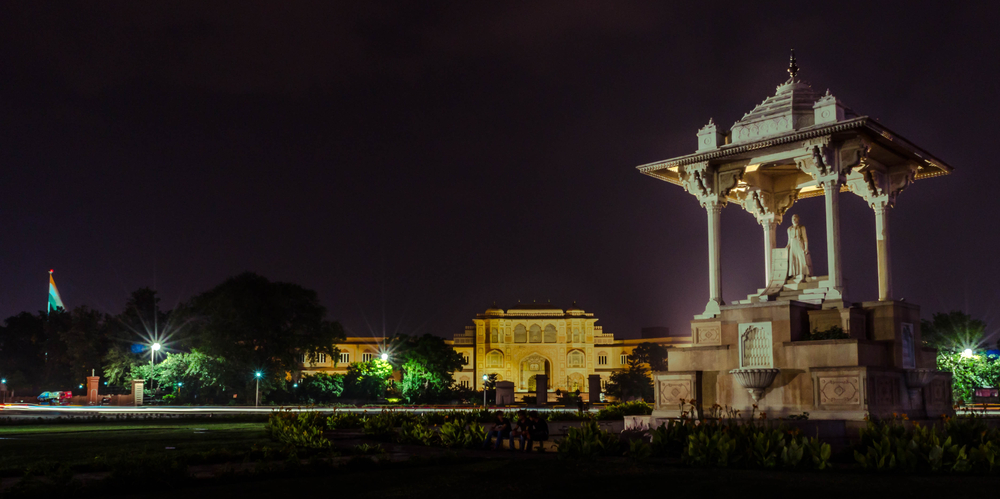
A life-size white marble statue of Sawai Jai Singh II, the founder of Jaipur, stands tall in the middle of a circle in the C-Scheme area. Erected in his honour, the statue pays homage to the founder of Jaipur.
Ram Niwas Garden
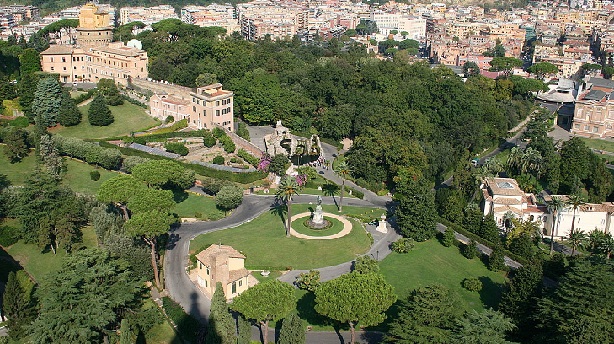
This historical garden was built by Maharaja Sawai Ram Singh in 1868. Located in the heart of the city, the garden houses the Albert Hall Museum (now known as Central Museum), a bird park, a zoo, the Ravindra Rang Manch theatre, an art gallery and an exhibition ground.
Zoological Garden
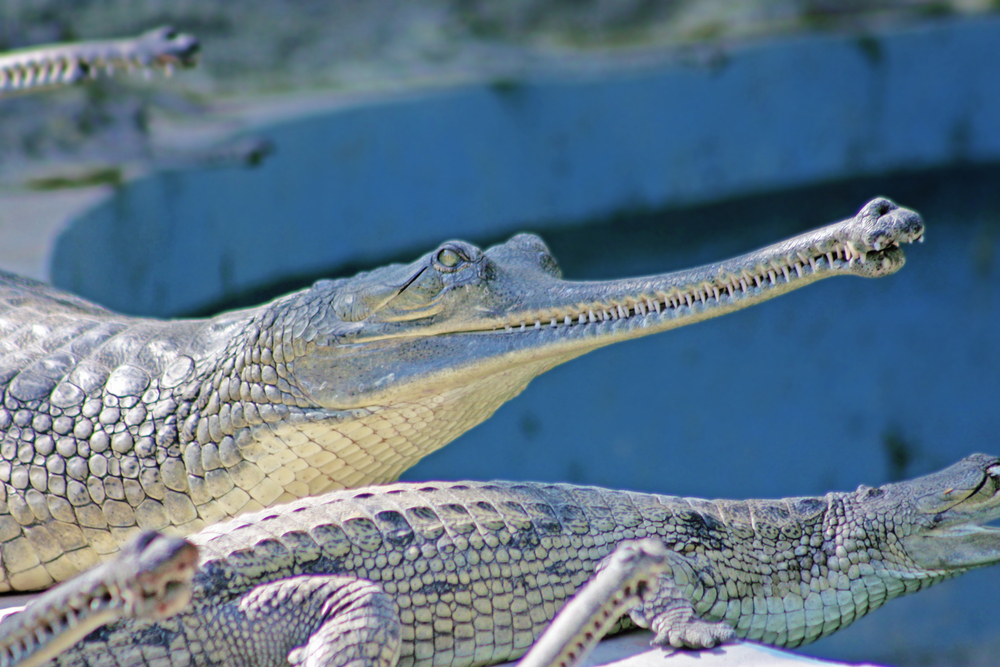
The Zoological Garden or Jaipur Zoo was founded by Sawai Raja Pratap Singh in the year 1868. It is located in Ram Niwas Bagh, within walking distance of the famous Albert Hall.
Kanak Vrindavan
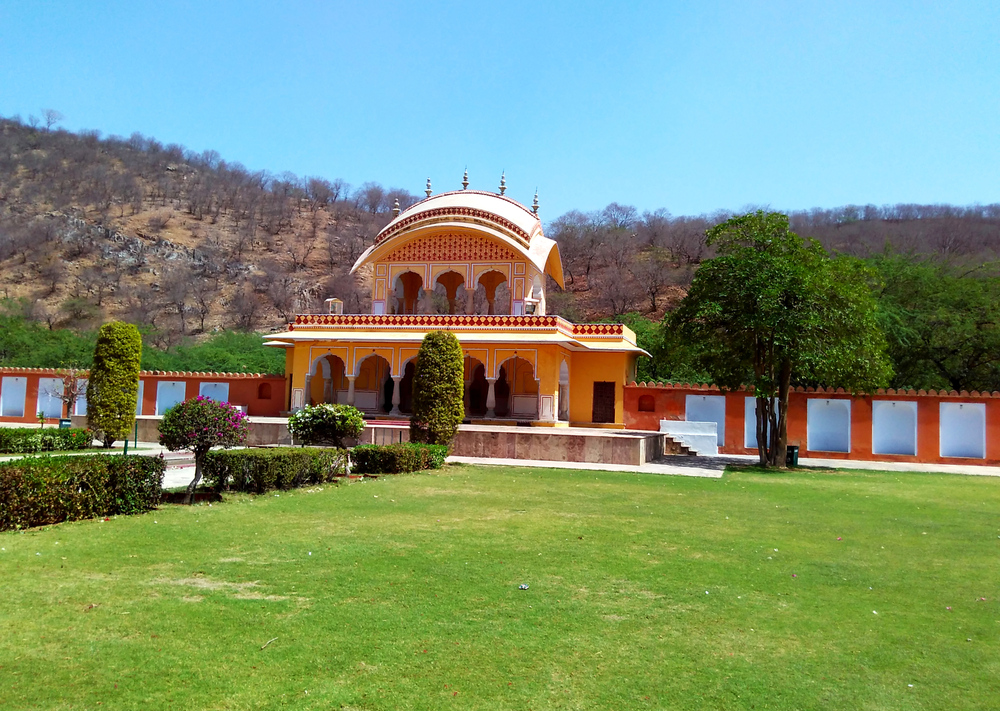
Located at the foothills of Nahargarh hills on the way to Amber, Kanak Vrindavan is popular among the locals for picnics. The beautifully landscaped garden houses an intricately carved temple, several terrace sites, marble columns and lattices, making it a dream location for film shoots as well.
Ishwar Lat
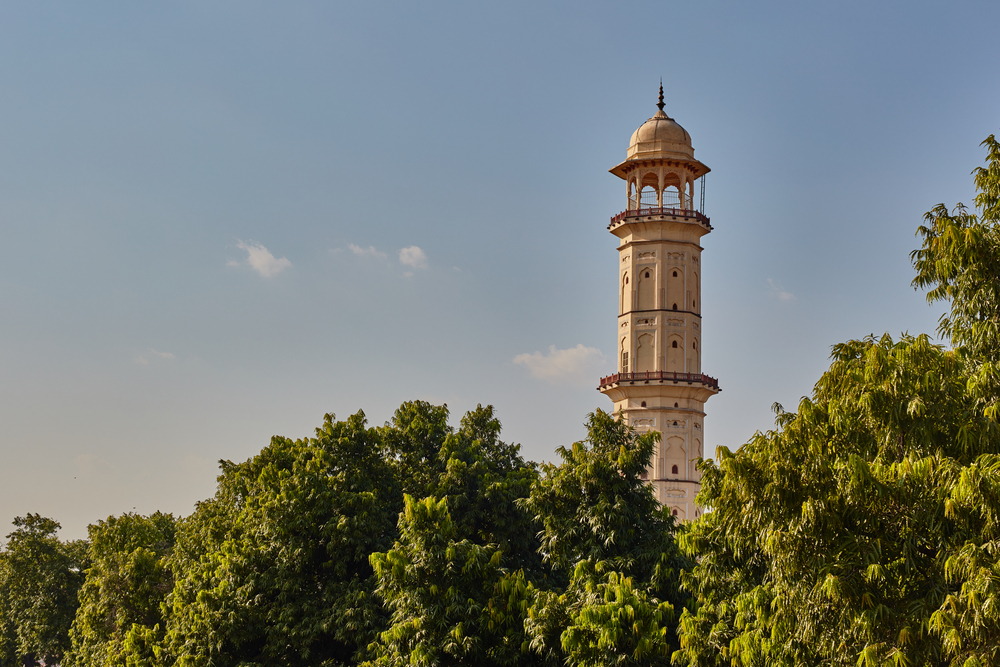
Ishwar Lat, also known as Swarg Suli is a 60 feet high grand minaret in Jaipur. Also called ‘Swarg Suli’ or ‘heaven piercing minaret’, this tower near Tripolia Gate was built by Raja Ishwari Singh in 1749 A.D to commemorate a grand victory against his brother Madho Singh in the Bagru war. Ishwar Lat offers a breath-taking view of Jaipur. Another popular story about Ishwar Lat goes that Maharaja Ishwari Singh built it to secretly view and admire the beautiful daughter of Prime Minister Argobind Natani. She lived in the haveli opposite Swarg Suli and the Maharaja was said to be in love with her.
Amar Jawan Jyoti
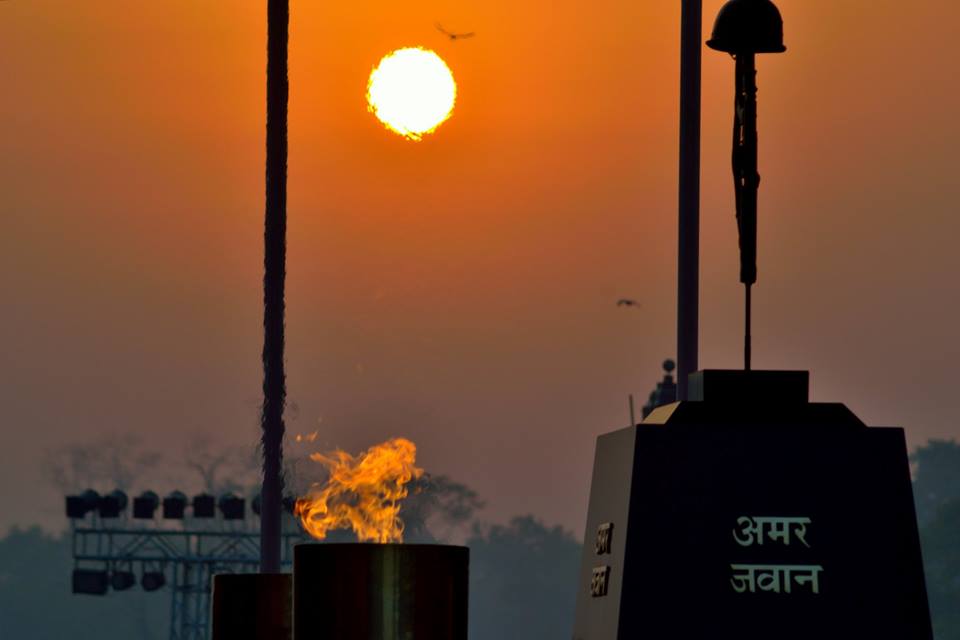
The Amar Jawan Jyoti, or the ‘flame of the immortal soldiers’, is a memorial dedicated to the martyrs of Rajasthan. This memorial is situated near Jaipur’s Vidhan Sabha Bhawan (Legislative Assembly).The key attraction of the Amar Jawan Jyoti is that the torches at the four corners of the structure are always burning. In evenings, this formidable structure is attractively lit up in vivid colours. The brilliant lighting effects make this a picturesque spot a favourite with tourists.
Maharani Ki Chhatri
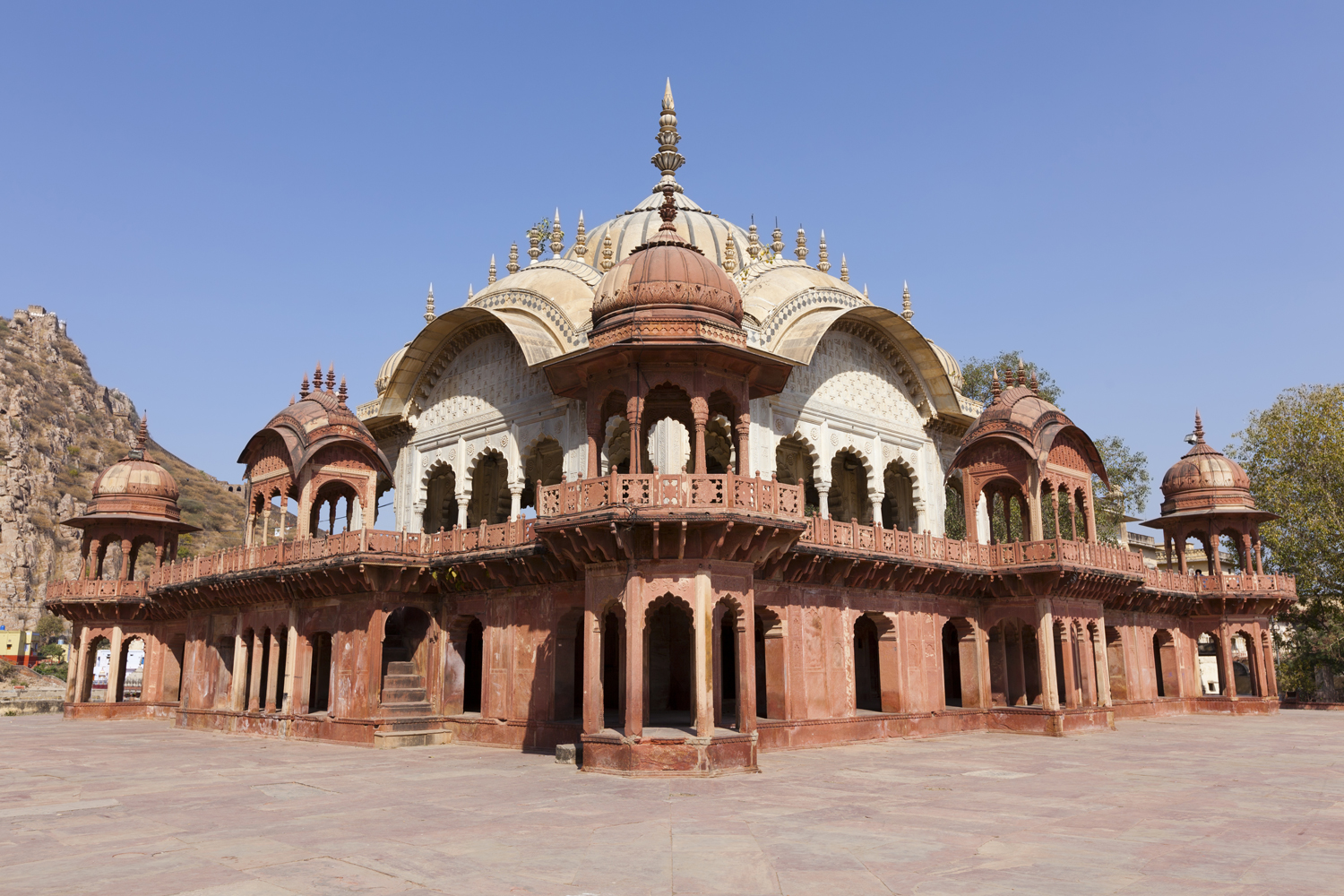
Maharani Ki Chhatri was a special funeral area for women belonging to Jaipur’s royal family and is located on the way to Amber fort. This crematorium has several exquisitely carved cenotaphs built to commemorate them. The cenotaphs are either built with marble or the local stones. As a popular belief, a cenotaph was finished with a roof structure only if the queen died before her king. In case she died after the king, it would remain unfinished. One of the significant features of these cenotaphs is the use of chhatri (umbrella), a quintessential architectural style of the Rajputs. The magnificent beauty and the historical significance of Maharani ki Chhatri makes it one of the most visited tourist attractions in Jaipur.
Nahargarh Biological Park
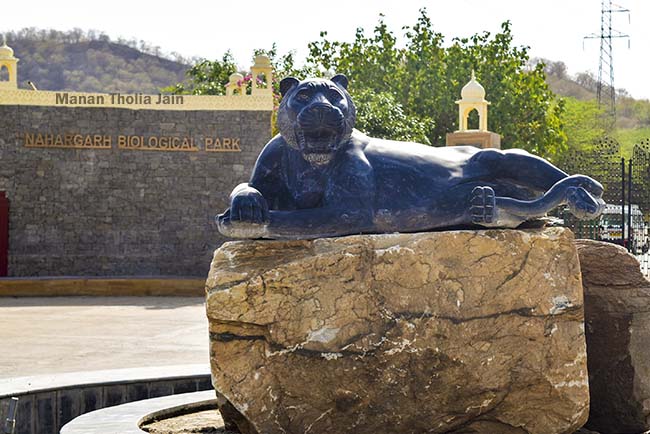
Nahargarh Biological Park, a part of the Nahargarh sanctuary is located about 12 km from Jaipur on the Jaipur-Delhi highway. It encompasses a large area of 720 hectares and is situated under the Aravalli range. The Park is famous for its vast flora and fauna, and its main aim is to conserve it. It also doubles up as a great place to educate people and conduct research on existing flora and fauna.
How to Get to Jaipur
By air: The Jaipur International Airport is called Sanganer Airport. There are domestic flight connections to and from Delhi, Kolkata, Mumbai, Ahmedabad, Jodhpur, Udaipur and several other places. There are also international flights from Jaipur to Dubai and Muscat as well.
By rail: Jaipur is connected via rail from Delhi, Agra, Mumbai, Chennai, Kolkata, Bikaner, Jodhpur, Udaipur, Ahmedabad, Bangalore, etc.
By road: A convenient way to travel to Jaipur is by road. Regular service of AC and Deluxe buses is available from all major cities in Rajasthan.
Places to visit near Jaipur
Pushkar
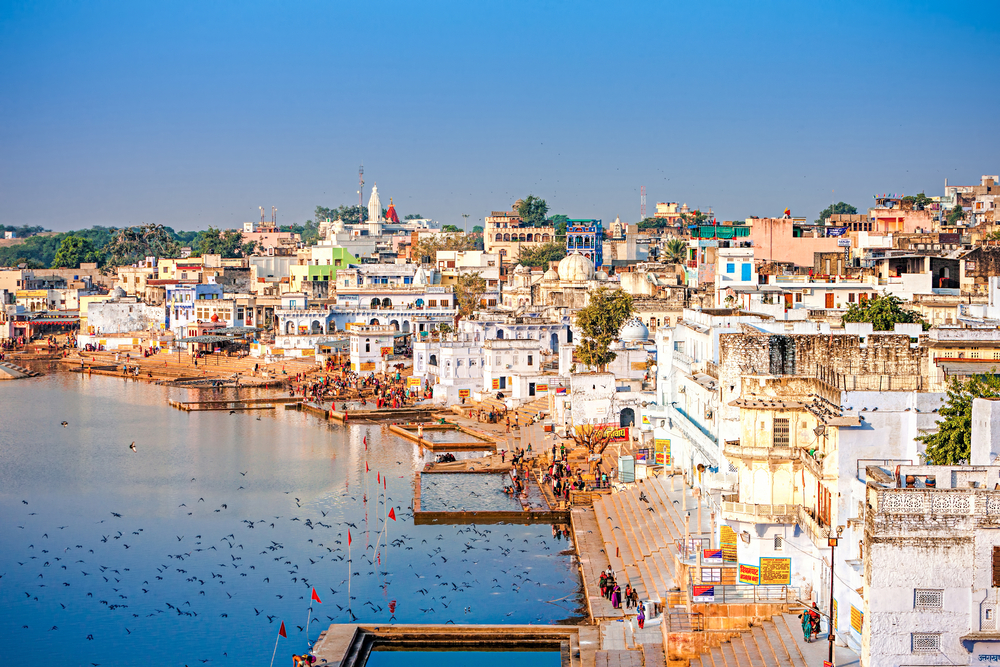
Pushkar is one of the oldest cities in India. Located to the northwest of Ajmer, the tranquil city of Pushkar is a favoured destination for thousands of tourists and devotees flocking to Rajasthan. Situated at a height of 510 metres, Pushkar is surrounded by hillocks on three sides. The ‘Nag Pahar’, literally meaning Snake Mountain forms a natural border between Ajmer and Pushkar. Known as ‘the rose garden of Rajasthan’, the essence of the famous Pushkar rose is exported all over the world. Along with an interesting mythological history, a legacy of timeless architectural heritage makes Pushkar a fascinating city.
According to legends, Lord Brahma, believed to be the creator of the Universe dropped a lotus to the ground leading to the immediate creation of a lake. He then decided to name the place after the flower, and thus the name, Pushkar. The city of Pushkar is home to the only temple dedicated to Lord Brahma in the whole world. Hindus consider a journey to Pushkar to be the ultimate pilgrimage that must be undertaken to attain salvation.
Ajmer
The city of Ajmer gets its name from ‘Ajay Meru’. Roughly translated, it means ‘invincible hills’. Nestled in the Aravallis south west of Jaipur, Ajmer was founded by Raja Ajaypal Chauhan in the 7th century AD. Till the late 12th century AD, Ajmer was the epicentre of the Chauhan dynasty. After Prithviraj Chauhan’s loss to Mohammed Ghori in 1193 AD, Ajmer became home to several dynasties. The Mughals in particular, fancied it as their favourite destination due to the presence of the holy Ajmer Sharif Dargah.
One of the early meetings between the Mughal King Jahangir and the Ambassador of the Court of Queen Elizabeth, Sir Thomas Roe, took place here in 1616. A few centuries later, the city was handed over to the British, making Ajmer the only region in Rajputana to be directly controlled by the East India Company. Ajmer is now regarded as an educational and cultural centre.
Ajmer is home to the famous Dargah Sharif, which houses the Tomb of Garib Nawaz, also known as Moinuddin Chisti, the founder of the Chisti order of Sufism. Ajmer is also known for Mayo College, one of the country’s first schools that was a stepping stone for British style of education. It is also a sacred city for Hindus and Muslims alike and is renowned for being a centre of history and culture and beauty.
Kota
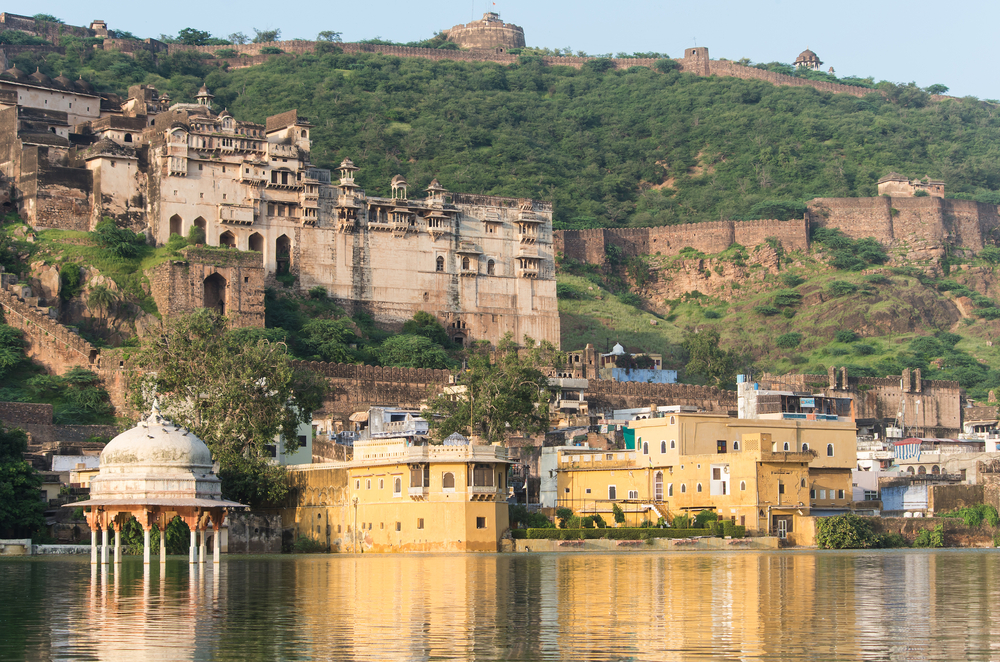
Kota is the third largest city in the state of Rajasthan and is one of the popular tourist destinations. Situated on the banks of the Chambal River, the city of Kota is famous for its distinctive style of paintings, palaces, museums, and places of worship. The city is known for gold jewellery, Doria sarees, silk sarees and the famous Kota stone.
The history of Kota dates back to the 12th century when Rao Deva conquered the territory and founded Hadoti. The independent Rajput state of Kota was carved out of Bundi in 1631. The kingdom of Kota had a turbulent history as it was raided by various Mughal rulers, Maharajas of Jaipur and even the Maratha warlords. The city of Kota is well known all over the world for its architectural splendour comprising beautiful palaces, temples and museums which exhibit the grandeur of the foregone era.


